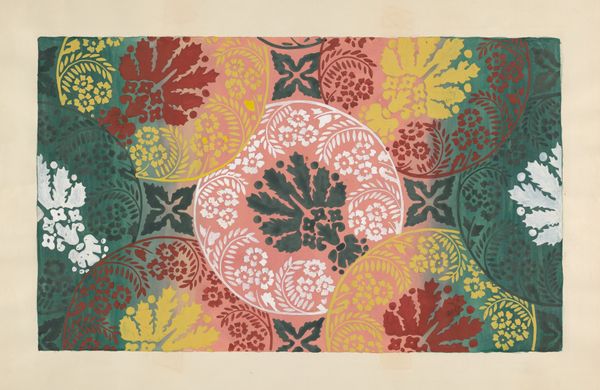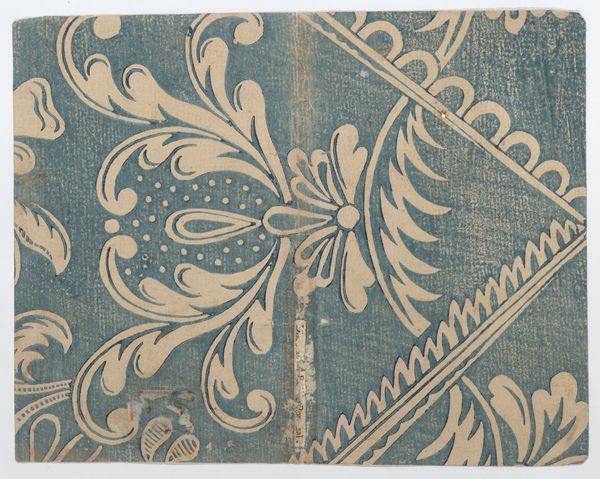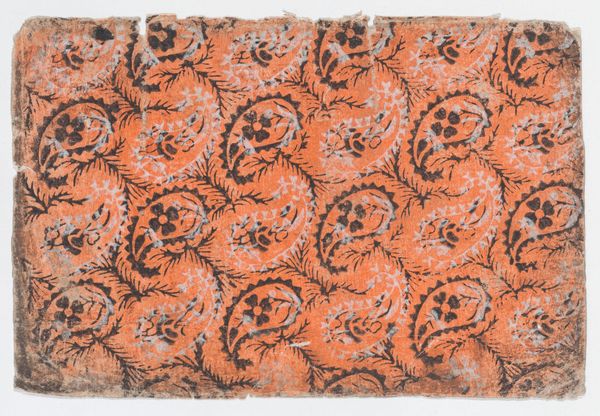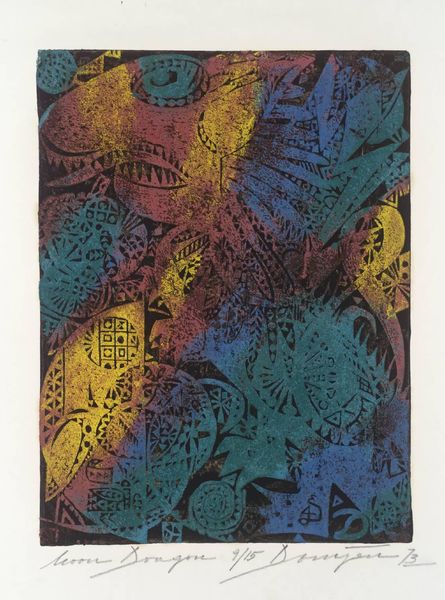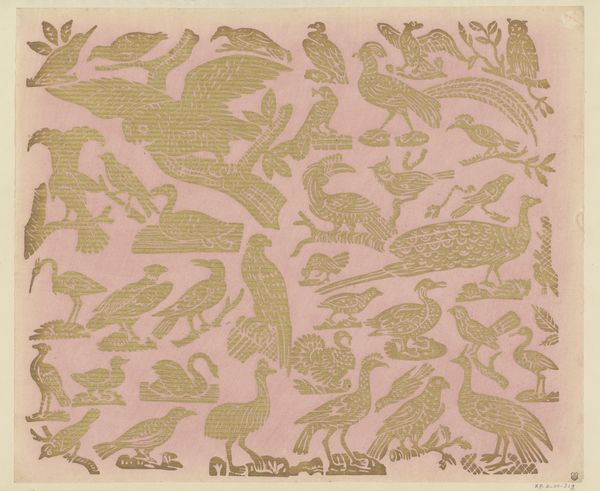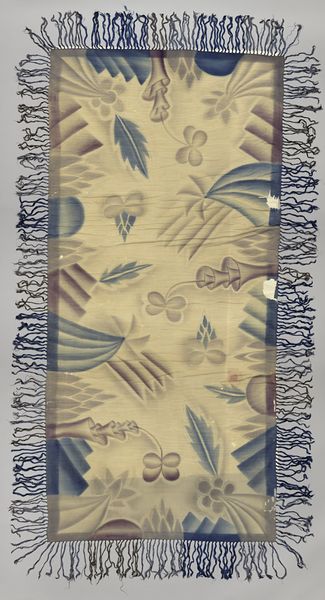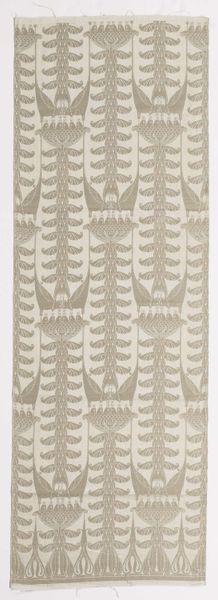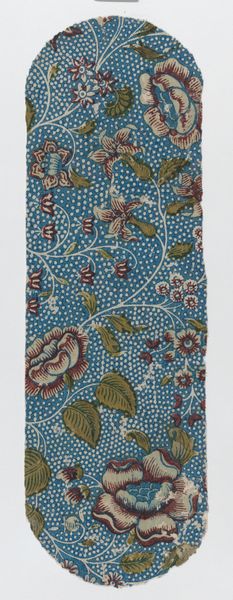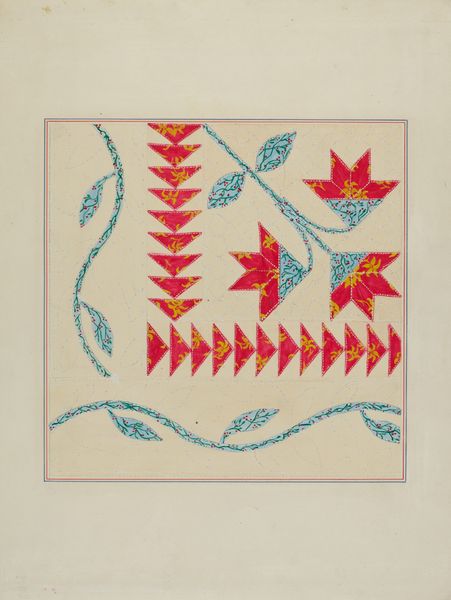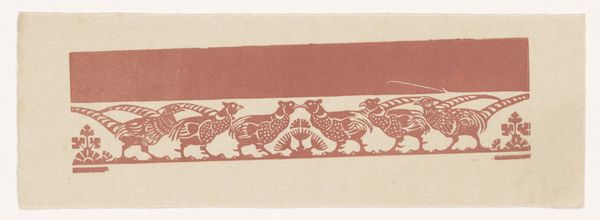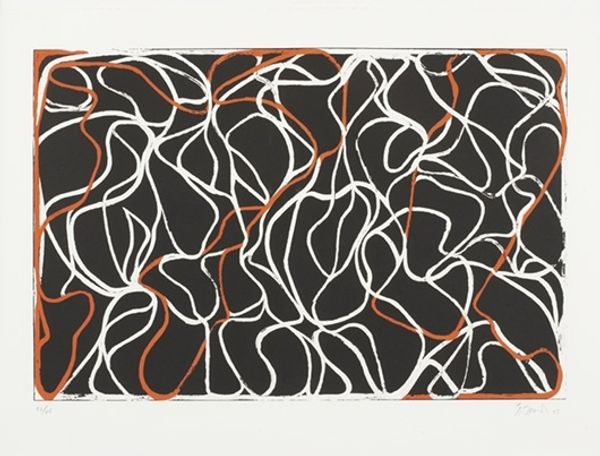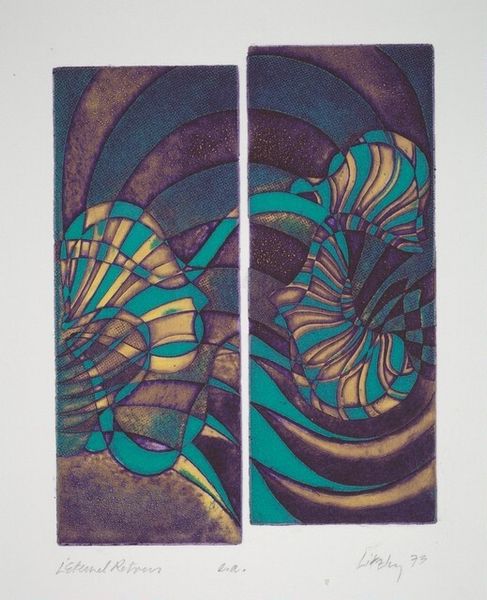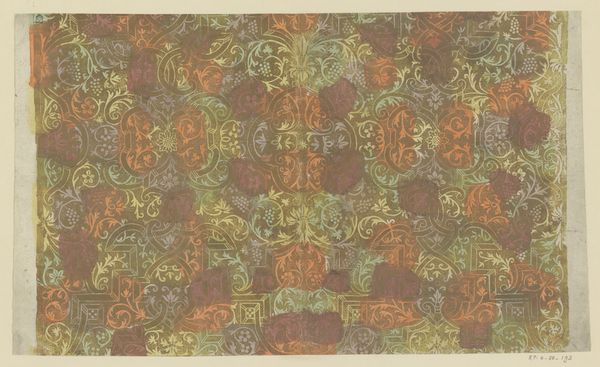
Langwerpige sjaal van zijden crêpe georgette gebatikt in bruin, oranje, groen en beige met een gestileerd floraal motief c. 1920s
0:00
0:00
Dimensions: length 154.0 cm, width 47.0 cm
Copyright: Rijks Museum: Open Domain
Curator: Here we have a silk crepe georgette scarf, a beautiful textile piece attributed to Ragnhild d'Ailly, dating from the 1920s. It’s a batik work, featuring brown, orange, green, and beige dyes in a stylized floral motif. Editor: My first thought? Exotic spice market! It just smells of faraway lands and strange, beautiful blossoms to me. The colors are warm and earthy, like sun-baked clay. Curator: Indeed, the palette aligns with the organic dyes prevalent in Art Nouveau textiles. Let’s consider the formal elements: the composition relies on mirrored symmetry, creating a balanced, harmonious visual field. The flora is abstracted, flattened into almost geometric forms. We see repetition, rhythm, and the interplay of positive and negative space. Editor: That "balance" feels so alive to me though, not static. Like something caught mid-transformation. It's static and formal, and bursting with something, too! Like flowers about to burst open… or creatures about to take flight? There’s tension there! Curator: That tension stems, perhaps, from the artist’s mastery of batik. The wax-resist dyeing creates these sharp contrasts and distinct outlines, setting up boundaries even within the flow of the vegetal forms. Note, too, how the artist uses a limited color range to generate visual interest and depth through varying intensities of hue. Editor: Exactly! It’s a whole ecosystem! The deep browns and oranges act as a foundation – roots in the soil – while the beige and greens, softer, gentler, rise toward the light. It really captures the *essence* of organic growth, not just the literal form. I bet it felt incredible to wear something like that. Curator: Certainly, this scarf exemplifies how textile design during this period moved toward simplification and stylization of natural forms. D’Ailly skillfully combines decorative aesthetics with techniques inherent in the textile itself. Editor: I leave here today feeling so in awe! Makes you think, doesn't it? Just a piece of silk, but teeming with imagination!
Comments
No comments
Be the first to comment and join the conversation on the ultimate creative platform.
